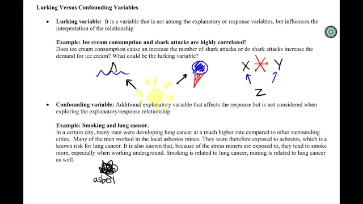
For instance, maybe the confounding variable just isn’t word size, but word frequency. People have a better time pronouncing frequent phrases and a tougher time saying uncommon phrases. Sometimes it’s actually unimaginable to separate out two variables that at all times co-happen. A confounding variable is an “additional” variable that you simply didn’t account for. That’s why it’s essential to know what one is, and the way to keep away from getting them into your experiment in the first place. A reduction within the potential for the occurrence and effect of confounding factors can be obtained by increasing the types and numbers of comparisons carried out in an evaluation.
This data leakage could be prevented by estimating model parameters utilizing only coaching set information, nevertheless, this might also lead to biased outcomes due to insufficient confound adjustment within the test. In contrast, the proposed method is applied only in the test set, which avoids the information leakage and ensures that the effect of confounds is sufficiently estimated. However, this method does not guarantee that the next machine learning evaluation won’t be affected by confounds.
Regularly Asked Questions About Confounding Variables
This allows partitioning of the predictive performance into the efficiency that may be explained by confounds and performance impartial of confounds. This method is flexible and allows for parametric and non-parametric confound adjustment. We show in actual and simulated information that this method accurately controls for confounding results even when conventional input variable adjustment produces false-positive findings. The proposed strategy is carefully related to the “pre-validation” methodology used in microarray research to test if a mannequin based on micro-array data adds value to medical predictors (Tibshirani and Efron 2002; Hoffling and Tibshirani 2008).

If you have accounted for any potential confounders, you’ll be able to thus conclude that the difference within the impartial variable must be the cause of the variation in the dependent variable. In a method, a confounding variable results in bias in that it distorts the outcome of an experiment. However, bias often refers to a kind of systematic error from experimental design, information collection, or information analysis. An experiment can contain bias without being affected by a confounding variable. For this suspect third extraneous variable to be a confounding variable, it should change systematically with no less than one of many other variables you might be measuring . We discuss concerning the third variable altering systematically as a result of it should behave in a means that’s similar to the variable that you are intentionally learning.